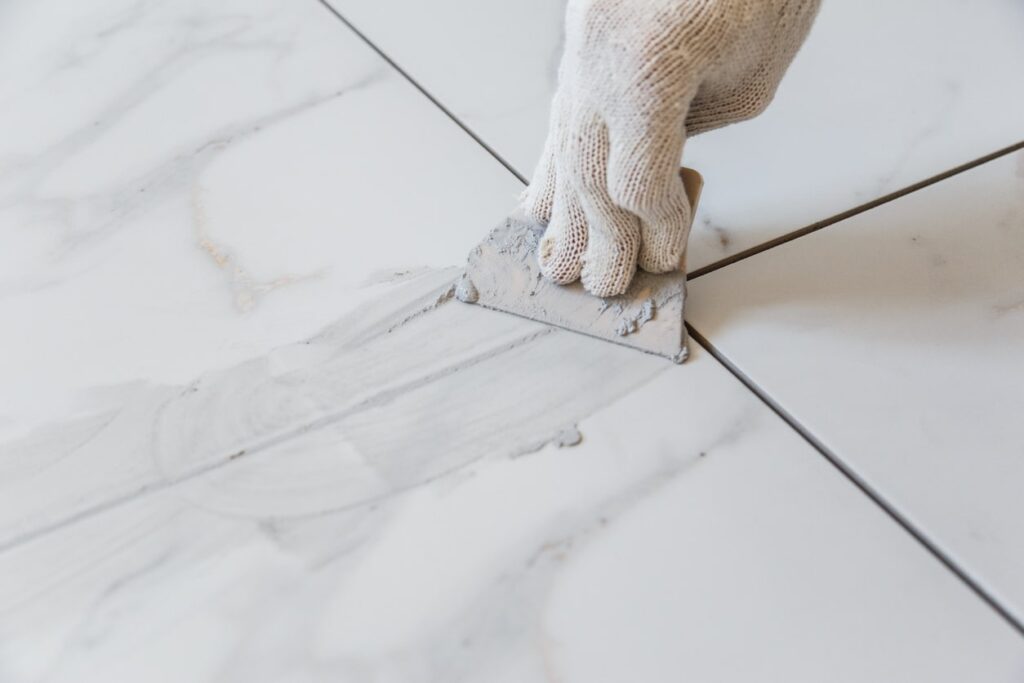
One-Piece vs Two Piece Toilet – Pros and Cons- 2025 Expert Guide
When upgrading your bathroom, one of the most important—and often overlooked—decisions is choosing between a one-piece or two-piece toilet. While
Almost as important as buying a new bathtub is understanding how to maintain it. And the first step to maintaining any bathtub and bathroom is understanding which adhesive or sealing agent is right for the job. Today we will be discussing the main differences between caulk and sealant and which is right for your home.
In general, both caulk and sealant are more or less interchangeable, as they refer to the same group of sealing agents. The two are interchangeable because the method of application is through the use of a caulking gun. Sealants are classified as caulk, and the main difference between the two is the material that is used.
Sealants tend to be constructed from a flexible material such as silicone and are generally water resistant and are generally for indoor use. Caulk on the other hand can refer to a number of sealing agents, made from silicone, latex or acrylic and is more for outdoor use.
For installing a bathtub and repairing a bathroom, caulk and sealants are your friend. They provide a sealing agent that acts as both a light adhesive as well as a water seal of sorts. Below are some of its uses in the bathroom.
In general, sealant is the prefered sealing solution for bathtubs and showers, as it is more water resistant than traditional caulk. Silicone sealant forms a watertight seal that is resistant to heavy temperature changes. You can also use a hybrid acrylic latex silicone caulk, which provides you the benefits of both worlds-highly resistant sealant that can be painted over.
Caulk is an umbrella term for a number of sealing agents, ranging from an array of materials from silicone, latex or acrylic. Generally, caulk is applied the same way that sealant is applied-using a caulking gun to repair bathtubs cracks or join surfaces together. The advantage of caulk is that it is easy to apply, easy to remove and is recommended for many outdoor projects. The last benefit of caulk is that it can be painted over, allowing for a more seamless look in the bathroom.
Caulk and sealant are very similar, with the exception that sealant is generally typically silicone based where caulk comprises a wider variety of materials. Below are some of the pros and cons of using caulk for your bathroom.
| Pros | Cons | |
| Sealant | More water-resistant than standard caulk | Harder to apply and remove than caulk |
| Its flexibility allows for versatile applications | Strong odor | |
| Cannot be painted over |
Caulk is used mostly to close gaps between walls and woodwork, but it can also be used for railings, molding, or blending mitered corners. Caulk also works well on cornices, coving, architrave, and skirting.
If one of the above examples describes your situation, here are the steps you will need to follow to apply caulk properly:
Sealant is a type of caulk, typically constructed from a flexible material, usually silicone. The advantage of this material over normal caulk is it’s flexibility, allowing it to fill over awkward or intrusive angles, while still providing a strong bond. Whereas caulk hardens and becomes rigid when it dries, silicone does not, allowing it to be a stronger material in terms of resisting water and mildew, when compared to caulk.
There are two main types of sealant you can choose from:
Sealant provides a sealing agent that is much more water resistant to caulk, but also is harder to apply. Below are some of the pros and cons of using sealant for your bathroom repair projects.
| Pros | Cons | |
| Sealant | More water-resistant than standard caulk | Harder to apply and remove than caulk |
| Its flexibility allows for versatile applications | Strong odor | |
| Cannot be painted over |
Sealant is a great choice if you need to seal a bath, a shower, or any other similar area where movement occurs. It can also be used to seal kitchen or bathroom sinks, around the toilet bottom, or your bath’s bottom edges.
When going through sealants available on the market, you might also stumble upon exterior silicones. These are used to seal door frames, windows, or any holes and cracks in brickwork.
Once you’ve purchased the correct sealant type, you should follow these steps:
When choosing between caulk or sealant, there are quite a few things you’ll need to keep in mind. Such determining factors are the time it takes to dry, durability, and maintenance.
| Factors | Caulk | Sealant |
| Drying time | 3 – 12 hours | 24 hours |
| Durability | 20 years | 20 years |
| Maintainance | Easy | Easy |
Material type will also play a crucial role in your decision. Not all materials work well with both sealing agents, so make sure you check this information before applying the caulk or sealant to your home.
Caulk:
Sealant:

When it comes to sealing your bathtub, there are two general solutions-either caulk or putty. Grout is also an acceptable solution, but it is much more permanent than either caulk or putty so extreme care must be placed before you use it. Caulk as mentioned previously, has a few issues but is generally the most used method of sealing cracks and adding additional supports to your bathroom.
Putty or plumber’s putty is another option, but it is more used as a temporary measure of sealing up cracks and is more intended for pipes than actual foundation. As a whole, the most preferred method is a hybrid caulk of acrylic, silicone and latex. This hybrid compound provides all the benefits of both normal sealant and caulk without any drawbacks.
When applying caulk or sealant, it is best to understand the strengths and weaknesses of your mixture. All caulk has a general temperature limit and will usually list whether they are more suited for outside use or indoor use, so it is important to follow the instructions before application.
Caulk and sealant are both great at providing a quick fix for any bathroom. For those looking to have an easy DIY solution in their home, it doesn’t get any more basic than applying the right adhesive. So long as you understand their strengths and weaknesses, they will save your home from greater headaches down the road.

Eric is the founder and president of Badeloft USA. He has been the president of Badeloft’s US division for over ten years and oversees all marketing and branding aspects of Badeloftusa.com.
His expertise lies in small business development, sales, and home and bathroom industry trends and information.
Contact us with any business related inquiries.

Free material samples and tub templates

When upgrading your bathroom, one of the most important—and often overlooked—decisions is choosing between a one-piece or two-piece toilet. While

Small details, including what you place on the floor, can make a big difference when setting up or upgrading your

Plumbing traps may seem like small components, but they are critical in keeping your home safe and odor-free. Two of
When shopping for new bath linens, the difference between a bath towel and a bath sheet can feel subtle, but
Request your free material sample below. By submitting, you agree to receive occasional product updates and offers from Badeloft. Unsubscribe anytime.
"*" indicates required fields
"*" indicates required fields
"*" indicates required fields